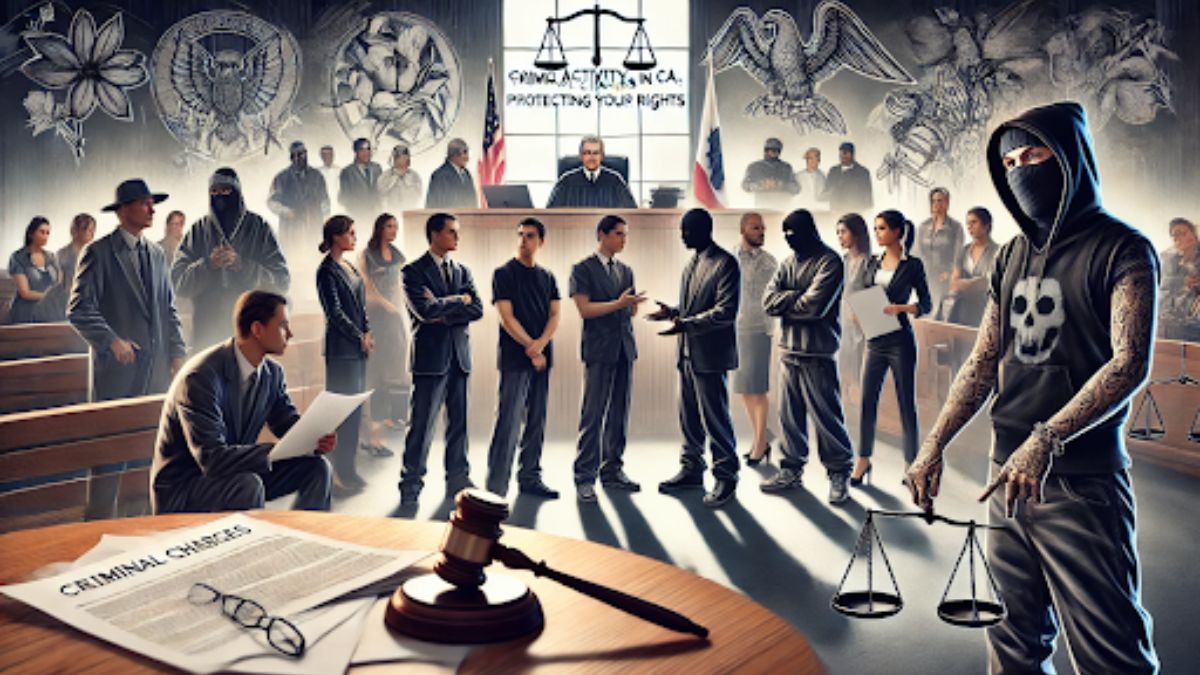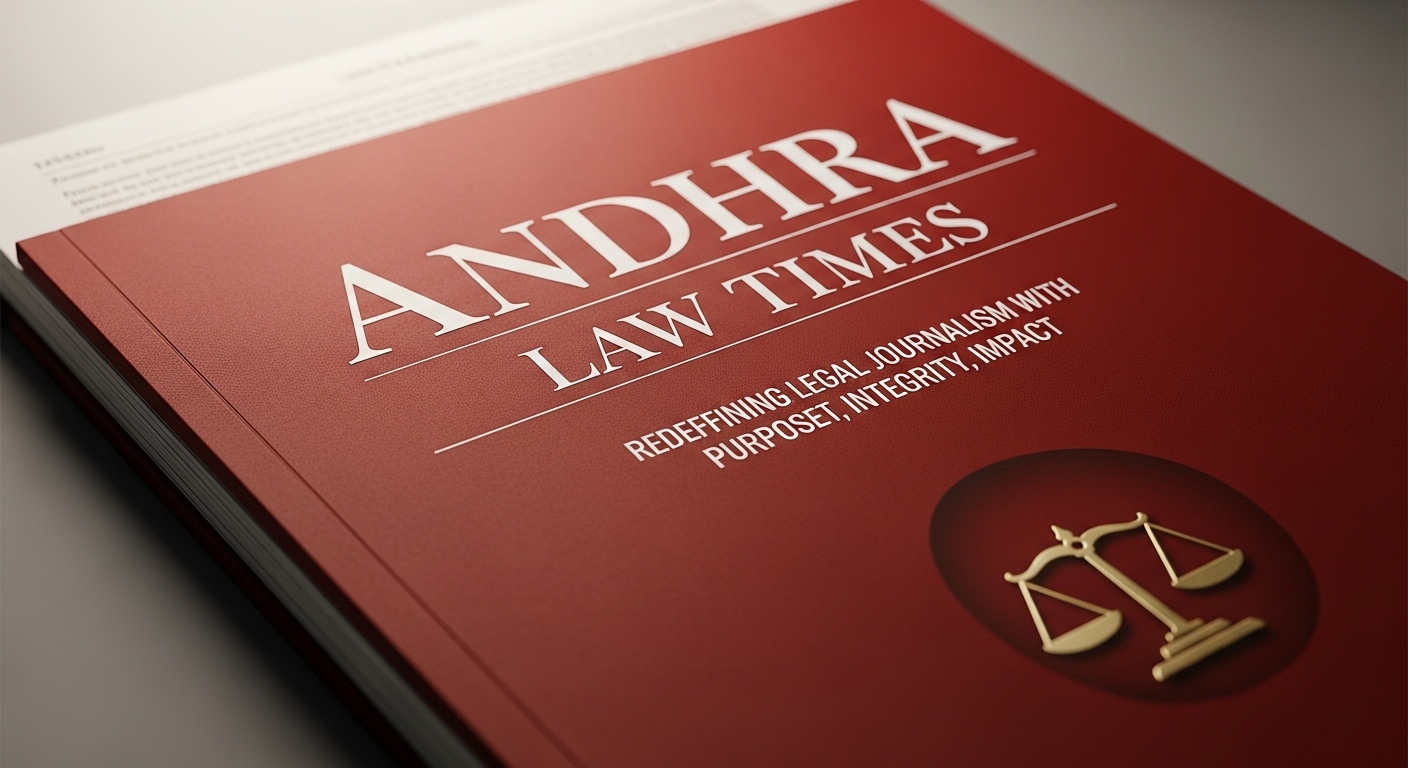LAW
Gang Activity and Criminal Charges in CA: Protecting Your Rights

Navigating the complexities of gang-related criminal charges in California requires a clear understanding of the legal landscape. In California, Penal Code § 186.22 makes it a crime to actively participate in a criminal street gang and enhances penalties for felonies committed for the gang’s benefit. This statute is designed to curb gang activities and impose stricter penalties on those involved in such criminal behavior.
For those facing charges under Penal Code § 186.22, comprehending the nuances of the law is essential to mounting a strong defense. Legal representation from knowledgeable California criminal defense lawyers can offer invaluable guidance and advocacy, protecting the accused’s rights throughout the legal process. This underscores the importance of having an experienced legal team when navigating these serious charges.
Understanding your rights and the legal framework surrounding gang-related activities is crucial. Knowing what constitutes active participation and how enhancements can influence sentencing provides a foundation for defending against these charges.
Understanding Gang-Related Criminal Behavior in California
California’s legal framework includes specific measures for addressing gang-related criminal behavior. This involves detailed definitions of gangs and gang activity, as well as significant sentencing enhancements for those involved in criminal activities associated with gangs. These legal principles heavily impact charges and sentences for individuals.
Defining Criminal Street Gangs and Activity
A criminal street gang is defined under California Penal Code 186.22. It refers to a group of three or more people with a common identifying sign, symbol, or name engaged in a pattern of criminal gang activity. Such activities include a variety of felony offenses, emphasizing violent crimes, drug-related offenses, and property crimes.
Primary activities of these gangs often include serious offenses like robbery and assault with a deadly weapon. Active participation in a gang involves demonstrating or willfully promoting criminal conduct with the gang’s goals, making even non-violent actions subject to scrutiny if they further the gang’s criminal objectives.
Sentencing Enhancements for Gang Affiliation
Under Penal Code 186.22, individuals convicted of crimes benefiting a gang face significant sentencing enhancements. These enhancements apply whether the crime is a felony or certain misdemeanors, potentially adding years to a prison sentence.
A sentencing enhancement can mean an additional two to fifteen years in prison, depending on the nature of the crime and the defendant’s role in criminal gang activity. This severe increase in penalties serves as a deterrent against gang membership and criminal activities tied to gangs. Importantly, prosecutors must prove that the crime was committed to benefit the gang.
The Impact of Gang Activity on Charges and Sentences
Gang affiliation heavily influences the charges and penalties an individual faces. Engaging in a pattern of criminal gang activity can turn a minor offense into a major one due to the gang’s involvement. Gang enhancements are applied on top of the base sentence, escalating the punishment significantly.
For instance, a felony linked to gang activity might result in state prison instead of county jail. This not only extends the incarceration period but also affects parole eligibility and rehabilitative opportunities. Legal representation must focus on challenging the gang enhancement and proving that the activity was not for the gang’s benefit, to minimize these severe consequences.
Protecting Your Rights: Legal Defenses and Steps to Take
When facing gang-related criminal charges in California, understanding your legal defenses and steps to protect your rights is crucial. Effective defense strategies and knowing your rights within the justice system can significantly impact the outcome of your case.
Strategies for Defending Against Gang-Related Charges
Challenging the Evidence: A critical defense strategy involves scrutinizing the evidence presented. This includes questioning the validity of witness testimony, physical evidence, and any statements made by the defendant. The goal is to create reasonable doubt about the defendant’s participation in the alleged criminal activities.
Disproving Gang Association: Another common defense is to dispute the defendant’s involvement or association with a criminal street gang. Demonstrating a lack of intent or direction to participate in gang-related activities can weaken the prosecution’s case.
Affirmative Defenses: In cases involving violent crimes or severe charges like murder or arson, the defense may assert self-defense, duress, or entrapment. For example, in a self-defense claim, the defendant argues that they acted to protect themselves from immediate harm.
Rights of the Accused and the Role of the Justice System
Right to a Fair Trial: Every defendant has the right to a fair trial, including the presumption of innocence until proven guilty. This entails a jury of peers, an impartial judge, and the opportunity to present a full defense.
Right to Legal Representation: Defendants are entitled to a defense by a criminal defense attorney. An experienced attorney can navigate complex legal frameworks like the Street Terrorism Enforcement and Prevention Act and negotiate on behalf of the defendant.
Protection Against Self-Incrimination: Under the Fifth Amendment, defendants cannot be forced to testify against themselves. This right protects them from making potentially self-damaging statements under pressure.
Access to Evidence: Defendants have the right to access all evidence that the prosecution plans to use in court. This transparency allows the defense to prepare adequately and identify any inconsistencies or errors.
By leveraging these strategies and rights, individuals facing gang-related charges can mount a robust defense, ensuring that justice is fairly served.
In Conclusion
Understanding the implications of gang enhancement laws in California is crucial for anyone facing criminal charges related to gang activity. These laws, such as those outlined in the California Street Terrorism Enforcement and Prevention Act (STEP Act), carry severe penalties.
Prosecutors must prove several elements to apply a gang enhancement. The defendant must have:
- Actively participated in a criminal street gang
- Known that the gang’s members engaged in ongoing criminal activity
- Willfully assisted or promoted felonious criminal conduct
The penalties for gang enhancements can be severe. Under Penal Code 186.22(a), charges can be classified as either felonies or misdemeanors. A misdemeanor conviction can result in up to one year in county jail or a fine of up to $1,000. A felony conviction can lead to more extended prison sentences.
Legal defenses against gang enhancement charges require a thorough examination of the case facts. Possible defenses include proving a lack of knowledge about the gang’s activities or demonstrating that the defendant did not actively participate in the gang.
Ensuring the protection of individual rights under these circumstances involves seeking expert legal advice. Knowledgeable legal professionals can dissect the case against the backdrop of these complex laws to provide a robust defense strategy.
Individuals facing such charges should be aware of their rights and the legal intricacies involved. This awareness is the first step towards defending against potential severe consequences under California’s gang enhancement statutes.
LAW
Andhra Law Times: Redefining Legal Journalism with Purpose, Integrity, and Impact

In an era where journalism is under intense scrutiny, legal media must do more than report cases or publish verdicts. The most respected platforms are those that combine sharp analysis, ethical rigor, and a commitment to social justice. Andhra Law Times is one such rising voice—an emerging leader in legal journalism that bridges traditional reportage with meaningful impact, shaping how law is understood, discussed, and applied in Andhra Pradesh and beyond.
This article delves into what makes Andhra Law Times distinct: its editorial philosophy, its alignment of performance with social responsibility, and why it represents the future of journalistic leadership in legal reporting.
Who Is Andhra Law Times?
Andhra Law Times is a legal news and commentary platform. Though relatively new on the landscape, it has steadily gained recognition for its nuanced reporting, expert commentary, and dedication to accessibility. It covers court judgements, legislative developments, public interest litigation, and rights issues—yet what sets it apart is how those stories are told: with clarity, context, and concern for the communities affected.
More than just breaking news, Andhra Law Times positions itself as a bridge: between judges and the public, between legal theory and lived experience, between governance and accountability. Its contributors include practicing lawyers, scholars, activists, and citizen journalists, all working together to ensure law is not just a formality, but a force for justice.
A Leadership Philosophy Rooted in Purpose
At the heart of Andhra Law Times lies an editorial philosophy built on purpose-driven journalism. Its core values include:
-
Empathy in Reporting
Stories are not just events—they’re about people. Andhra Law Times emphasises the human consequences of legal decisions, highlighting victims, underrepresented voices, and the socio-cultural contexts in which law operates. -
Integrity & Transparency
Legal journalism faces risks: misinterpretation, bias, sensationalism. Andhra Law Times insists on accurate sourcing, full context, and transparency about its editorial processes. Corrections are published openly; conflicts of interest are disclosed. -
Accessibility & Inclusion
Legal language is often arcane. To bridge the gap, Andhra Law Times translates complex judgments into clear writing, provides summaries, infographics, and local language versions. It works to ensure citizens—regardless of educational background—can understand their rights, obligations, and recourse. -
Social Justice Orientation
The platform does not shy away from covering issues that matter: rights of marginalized communities, environmental law, labor rights, gender justice. It aims to hold institutions accountable and to highlight systemic issues, not just isolated legal matters.
Bridging Performance with Impact
Leadership in legal media isn’t only about moral purpose; it’s also about excellence in execution. Andhra Law Times has managed to merge the two in a way that is compelling, sustainable, and socially important.
-
Quality Reporting: Articles are fact-checked diligently; legal specialists are consulted; and deeper features are produced—on constitutional law, administrative law, or public interest litigation—going beyond mere headlines.
-
Innovative Storytelling: Andhra Law Times uses multimedia—podcasts, video explainers, interviews, and infographics—to make dense legal topics more engaging. For example, a complex Supreme Court decision is broken down via animated explainer videos so people outside the legal profession can follow.
-
Community Engagement: Not just reporting on issues, Andhra Law Times partners with NGOs, legal aid societies, and law schools to host public forums, webinars, and workshops—helping citizens know where to find legal help, how to file complaints, how the law impacts daily life.
-
Sustainability & Ethics: Advertising is clearly marked; sponsored content is separated; the platform avoids sensationalizing sensitive legal issues for clicks. It also invests in its team: ensuring fair compensation for contributors, diversity of voices, and safe working conditions for reporting.
Influence in the Digital Age
Digital platforms are reshaping how people consume legal news. Andhra Law Times has embraced these changes wisely, seeing them as opportunities to amplify impact rather than mere traffic generators.
-
Social Media Advocacy & Education: Andhra Law Times maintains active presence on platforms like Twitter, Instagram, and LinkedIn, not just to share articles, but to spark conversation—debates on legal reform, rights, policy changes. Followers are encouraged to ask questions, share stories, and participate in democracy.
-
Thought Leadership: Editorials and op-eds are published that don’t just comment on legal issues but propose solutions: reforms to outdated laws, suggestions for improving access to justice, critiques of legal system inefficiencies. By doing so, Andhra Law Times positions itself as more than observer—it becomes a catalyst for change.
-
User-Generated Content & Local Voices: Recognizing that law plays out differently in small towns and villages, Andhra Law Times solicits articles and reports from local correspondents. Awareness of local customs, languages, and conditions helps it avoid a one-size-fits-all view.
Why Andhra Law Times Matters
In today’s socio-legal climate, legal information is power. Andhra Law Times matters because:
-
It builds legal awareness, enabling people to understand their rights, redress mechanisms, and how to participate in justice systems.
-
It enhances accountability, by shining light on judicial and governmental institutions, demanding transparency and reforms where needed.
-
It supports legal empowerment of marginalized groups who historically have lacked voice, resources, or representation.
-
It reinforces rule of law: in democracies, laws matter only if known, trusted, and fairly enforced. Andhra Law Times helps ensure laws don’t remain abstract but are applied in context, with fairness.
Challenges and Opportunities Ahead
Even as Andhra Law Times gains traction, its path is far from free of obstacles. Recognizing and navigating them will define its long-term success.
-
Balancing Speed with Accuracy: In breaking headlines, there is pressure to publish quickly. But legal reporting demands precision. Errors can mislead, harm reputations, or misinform the public.
-
Monetization without Compromise: Generating revenue—through subscriptions, advertising, sponsored content—can risk diluting editorial independence. Andhra Law Times must find models that support integrity.
-
Access in Rural & Underrepresented Areas: Internet access, literacy, language barriers are still obstacles. To have true impact, coverage must reach those who are least heard.
-
Maintaining Diversity of Voices: As platforms grow, institutional pressure, groupthink, or selection bias can creep in. Ensuring diverse contributors—not just legal professionals, but activists, grassroots leaders, local correspondents—is vital.
But each challenge is also an opening:
-
Investment in fact-checking tools, legal translation, local languages.
-
Subscription tiers, membership models, grants, partnerships with foundations.
-
Offline outreach: workshops, print summaries, radio, or community gatherings.
-
Mentorship programs for new writers, especially from underrepresented backgrounds.
Looking Ahead: The Vision for Andhra Law Times
The trajectory of Andhra Law Times signals a shift in what leadership in legal journalism can look like. As it continues to evolve, it may achieve several new milestones:
-
Expanding its regional reach, possibly beyond Andhra Pradesh, into national or pan-South Indian legal coverage, while retaining its local flavor.
-
Establishing a legal education wing: training programs for law students, paralegals, or community legal educators.
-
Building a repository of legal resources: free guides, searchable databases of judgments, easy-to-use toolkits for citizens.
-
Collaborations with tech platforms: legal tech startups, AI summarization of judgments, mobile apps for citizens to lodge grievances or track cases.
-
Advocating for policy reforms: using its platform to influence legislation, access to justice reforms, or judicial procedural improvements.
A Model for Leadership in Journalistic Purpose
Andhra Law Times is more than a news platform—it’s a model of what leadership in legal journalism can become. It embodies the idea that success is not just about reach or clicks—but about trust, impact, and responsibility. In a time when law shapes everyday life—during pandemics, environmental crises, social movements—the need for legal journalism that is reliable, empathetic, and justice-oriented is greater than ever.
By combining performance with purpose, Andhra Law Times demonstrates that journalism, especially around something as crucial as law, need not choose between integrity and influence. Its journey shows that ethical leadership in media is not just inspirational—it’s essential.
LAW
Child Custody Challenges: Understanding Your Rights and Options

Navigating child custody can feel overwhelming, especially during an emotional time. Understanding your rights and options is the first step to making confident, informed decisions.
Whether facing a divorce, separation, or a change in family circumstances, knowing what to expect helps reduce stress and protect your child’s best interests. Custody challenges vary, but you don’t have to face them alone.
With the right knowledge and support, you can work toward a solution that ensures stability and care for your child. Let’s break down the key points so you can move forward with clarity.
The Impact of Domestic Violence
Domestic violence can have a serious effect on child custody decisions. Courts always prioritize the child’s safety and well-being, so any history of abuse is taken very seriously.
A parent accused of violence may face limited or supervised visitation, or in some cases, lose custody altogether. Even if the child wasn’t directly harmed, witnessing violence can impact their emotional health.
That’s why it’s important to bring all facts forward. If you or your child is in danger, seeking legal and protective help right away is key to keeping everyone safe and ensuring a fair custody arrangement.
Geographic Relocation and Custody Changes
If one parent wants to relocate, they often need permission from the other parent or the court. The court will consider how the move affects the child’s schooling, family relationships, and overall stability.
Even if the move is for a job or a better life, it must still support the child’s best interests. If parents can’t agree, a judge will decide based on the facts.
Planning and communicating openly can help avoid unnecessary conflict and stress for everyone involved.
Substance Abuse Issues
Courts are careful to protect children from unsafe or unstable environments. If there’s evidence of drug or alcohol misuse, the court may limit custody or require supervised visits.
But it’s not always permanent. A parent who seeks help and shows improvement may regain custody rights over time. The focus is always on what’s best for the child.
Support from counselors, treatment programs, and legal professionals can make a big difference in moving forward in a healthy, safe direction.
The Role of Mediation in Custody Disputes
Mediation offers a peaceful way to handle custody disagreements without going to court. A trained mediator helps parents talk through their concerns and find workable solutions together.
This process is often quicker, less expensive, and less stressful than a court battle. Mediation focuses on cooperation and puts the child’s needs first.
With guidance from trusted professionals like this Springdale car accident lawyer, parents can find fair agreements that work for both sides.
Choosing mediation can help families move forward with less conflict and more understanding, which is important when children are involved.
Protecting Your Child’s Best Interests
Protecting your child’s best interests is the heart of every custody decision. By staying informed and seeking the right support, you can make choices that lead to a brighter, more stable future.
Don’t face custody challenges alone. Reach out to trusted legal professionals who can guide you every step of the way. Your child deserves security, care, and a plan that puts them first.
Did you find this article helpful? Check out the rest of our blog now!
LAW
Legal Representation for Auto and Personal Injury Accidents

Accidents can happen at any time. Whether it’s a car crash or a slip and fall, injuries from these events can turn your life upside down. When you’re hurt due to someone else’s mistake, getting legal help is important.
A lawyer can guide you through the process, help you understand your rights, and make sure you get the compensation you deserve.
This article explains why legal representation matters and how it can help you after an auto or personal injury accident.
Why Legal Help Is Important After an Accident
After an accident, many people feel confused or overwhelmed. Medical bills may pile up, and you might not be able to work. Insurance companies might call you quickly, offering a settlement. But their offer may not cover all your losses.
Having a lawyer on your side protects your interests. A lawyer understands the laws and how insurance companies operate. They know how to deal with adjusters and can stop you from accepting an unfair offer. With legal help, you’re more likely to get full compensation for your injuries, lost income, and pain.
What a Personal Injury Lawyer Does
A personal injury lawyer handles all the legal steps so you can focus on recovery. First, they will gather facts and evidence. This includes medical records, police reports, witness statements, and photos from the accident.
Next, the lawyer builds a strong case. They may speak with medical experts to understand the full impact of your injuries. They also calculate how much money you should receive. This can include current medical costs, future treatment, missed wages, and even emotional stress.
How Auto Accident Claims Are Handled
Auto accident cases often involve dealing with several parties: the other driver, their insurance company, your insurance company, and sometimes the police. It can get complicated fast.
Your lawyer will talk with all parties on your behalf. They’ll also file any necessary paperwork and make sure you meet all deadlines. If the other driver was clearly at fault, your lawyer will collect proof to show that. If the fault is unclear, they will work to protect your side of the story.
Staten Island accident lawyers often deal with serious car accident cases and understand the unique laws in New York. They can help you deal with no-fault insurance rules and ensure you get the coverage you’re owed.
Choosing the Right Lawyer for Your Case
Not all lawyers are the same. Look for someone who has experience with injury and accident cases. They should be able to explain things in a simple way and make you feel comfortable.
Check reviews and ask about past results. A good lawyer will not promise a certain outcome, but they will fight hard for your rights. Most personal injury lawyers work on a “no win, no fee” basis, which means you pay nothing unless they win your case.
All About Auto and Personal Injury Accidents
Getting legal help after an auto or personal injury accident can make a big difference. It takes the pressure off you and helps ensure you’re treated fairly. If you’ve been hurt in an accident, don’t face the process alone.
A skilled lawyer can guide you every step of the way and help you get the justice and compensation you deserve.
Looking for more tips and ideas? We’ve got you covered. Check out some of our other posts now.
-

 HEALTH2 years ago
HEALTH2 years agoIntegrating Semaglutide into Your Weight Loss Plan: A Practical Guide
-

 HOME IMPROVEMENT2 years ago
HOME IMPROVEMENT2 years agoHow to Choose the Perfect Neutral Area Rug for Every Room
-

 LAW1 year ago
LAW1 year agoTeenage Drivers and Car Accidents in California: Risks and Parental Liability
-

 CONSTRUCTION1 year ago
CONSTRUCTION1 year agoConstruction Site Safety Regulations in New York and Your Rights as a Worker
-

 LAW1 year ago
LAW1 year agoPost-Divorce Considerations in California: Modifications and Long-Term Planning
-

 HOME2 years ago
HOME2 years agoSandra Orlow: The Teen Model Who Captivated the Internet
-

 FINANCE1 year ago
FINANCE1 year agoDigital Asset Management in Florida Estate Planning
-

 LAW1 year ago
LAW1 year agoKentucky’s School Football: Concussions, Injuries, and Legal Options
